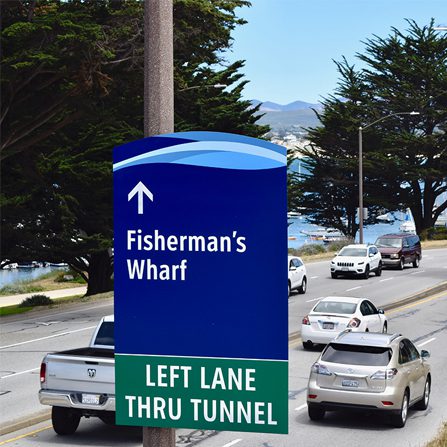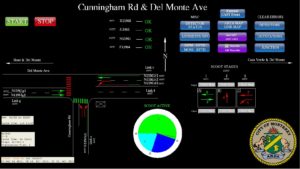- Products
- Solutions
- Resources
- Partners
- About
- Contact
Case Study: Optimizing Traffic with Yunex Traffic SCOOT
Western Systems partnered with Monterey, CA to implement Yunex Traffic SCOOT, an Adaptive Traffic Control System

Background: Over 4 Million Tourists Visit Monterey Each Year
The City of Monterey, California, is unique in that it has a population of 28,000 residents, but as a tourist destination, it can attract over 4 million visitors per year. The popular tourist attractions include the Monterey Bay Aquarium, Cannery Row, Downtown, restaurants, gift shops, art museums, music festivals and outdoor activities such as the Monterey Bay Half Marathon. The Presidio of Monterey essentially splits the City in two areas. Only Lighthouse Curve and Highway1/68 provide a connection between these two areas.
The Challenge: Seasonal Tourism and Unpredictable Peaks
The increasing number of tourists visiting the City each year can create unpredictable peaks, not easily addressed through traditional time of day plans. Tourism peaks from Memorial Day through Labor Day, however the City experiences heavy tourism traffic throughout the year, even in the winter. World renowned festivals, car auctions, races at the Laguna Seca racetracks and other popular attractions such as the Monterey Bay Aquarium and Cannery Row, would spike traffic saturation to extremely high levels.
The large swings and unpredictability in traffic volumes created a challenge for the City. In order to address changes in traffic patterns, the City’s Traffic Engineer would have to constantly acquire current traffic data and continually change many coordination and time of day plans. This process is labor-intensive, time-consuming and costly.
The Solution: SCOOT Adaptive Traffic Control
Western Systems facilitated the installation of Yunex Traffic SCOOT (Split Cycle Offset Optimization Technique). SCOOT models traffic detected on-street to adapt three key traffic control parameters continuously – the amount of green for each approach (Split), the time between adjacent signals (Offset), and the time allocated for all approaches to a signalized intersection (Cycle time). As a result, the signal timing evolves with the changing traffic volumes and demands making SCOOT a one of a kind predictive adaptive traffic solution.
SCOOT uses vehicle detection to count the number of cars approaching the intersection, communicates this information, and implements necessary changes efficiently. This enables the system to progress traffic through a corridor with few or no stops. This results in more efficient flow, less fuel consumed, fewer emissions, and improves travel time, quality of life, and safety.

Outcome: Optimized Traffic Flow Reduces Congestion
With the implementation of SCOOT, the City has seen a noticeable improvement in traffic. The busy corridor in the heart of the City’s most popular tourist attractions now has less stop and go traffic and better travel times. It is estimated that by the time the City has its corridors running on an adaptive system that this will result in a yearly reduction of 20 tons of criteria pollutants (NOx, ROG and PM). Travel times on Lighthouse Avenue, before and after the adaptive system installation, showed an average decrease in delays and average stops of 30%.
The SCOOT system has been able to adapt to conditions that were unforeseen such as reduction and changes in traffic patterns during the Shelter in Place order issued due to Covid-19. Adaptive systems stay efficient even when traffic conditions change drastically.
“Our traffic patterns during the COVID-19 pandemic have been very unpredictable and inconsistent. Before SCOOT, this would be a costly and time consuming challenge to address. However, with SCOOT, the system automatically adapts to real-time conditions creating efficient flow even with constantly changing traffic demands.” – Andrea Renny, P.E., PTOE, City of Monterey Traffic Engineer
If you have any Questions at all, Call us at 425.438.1133 or Contact Us